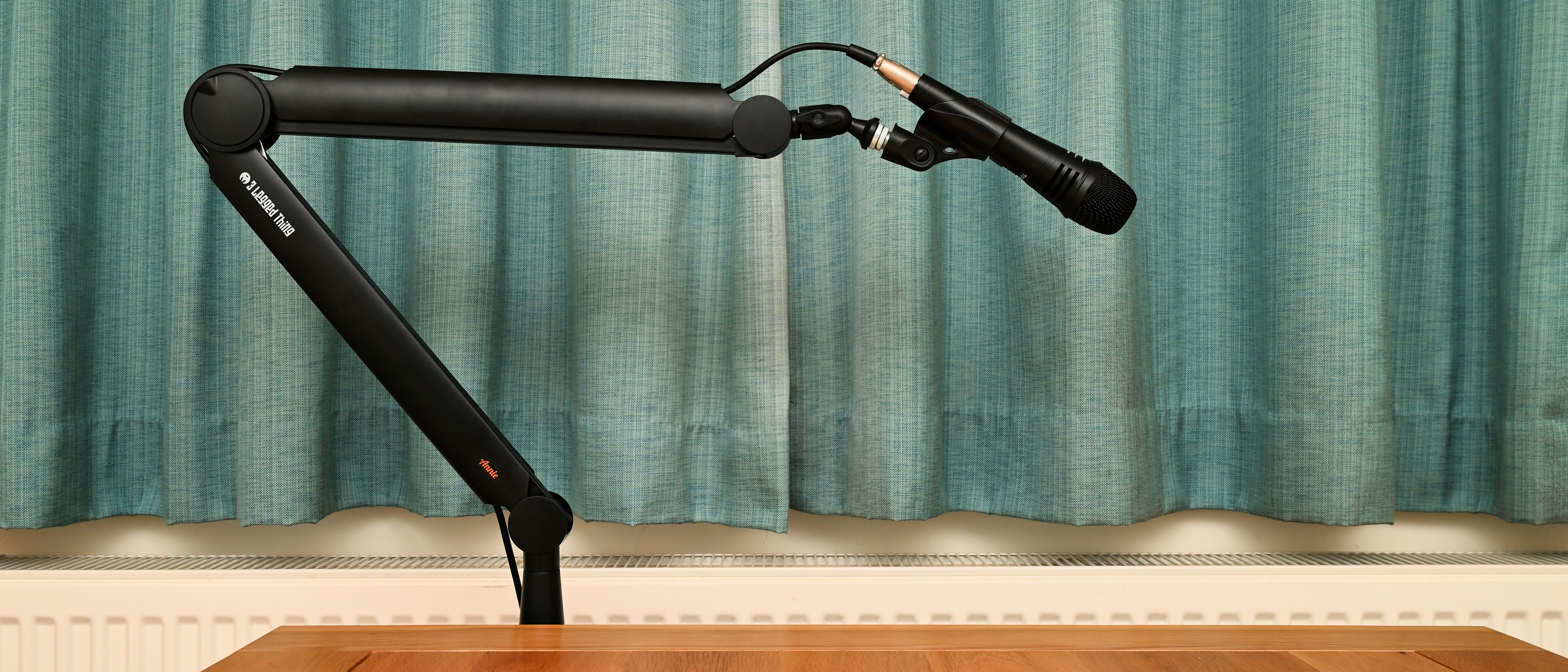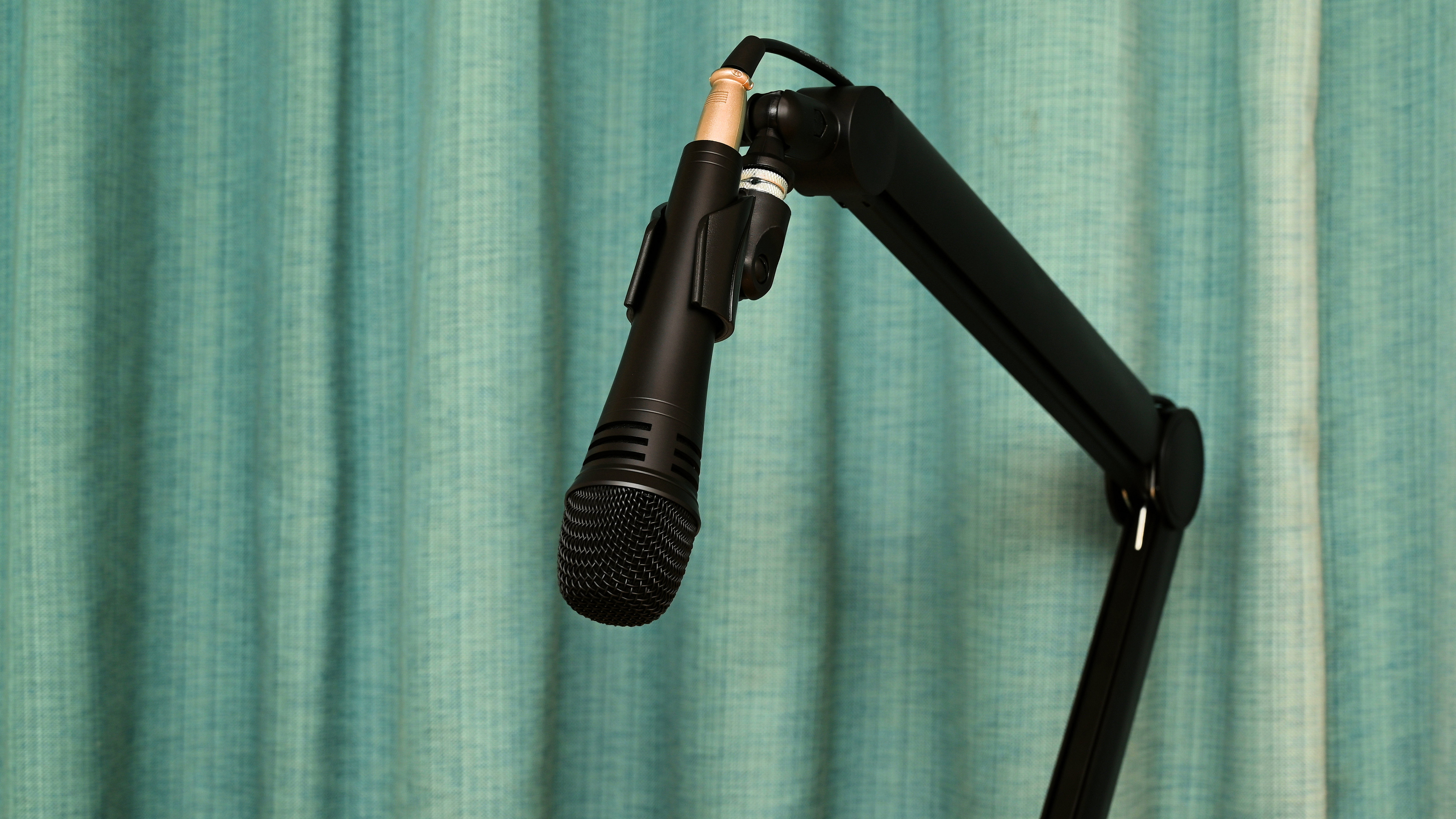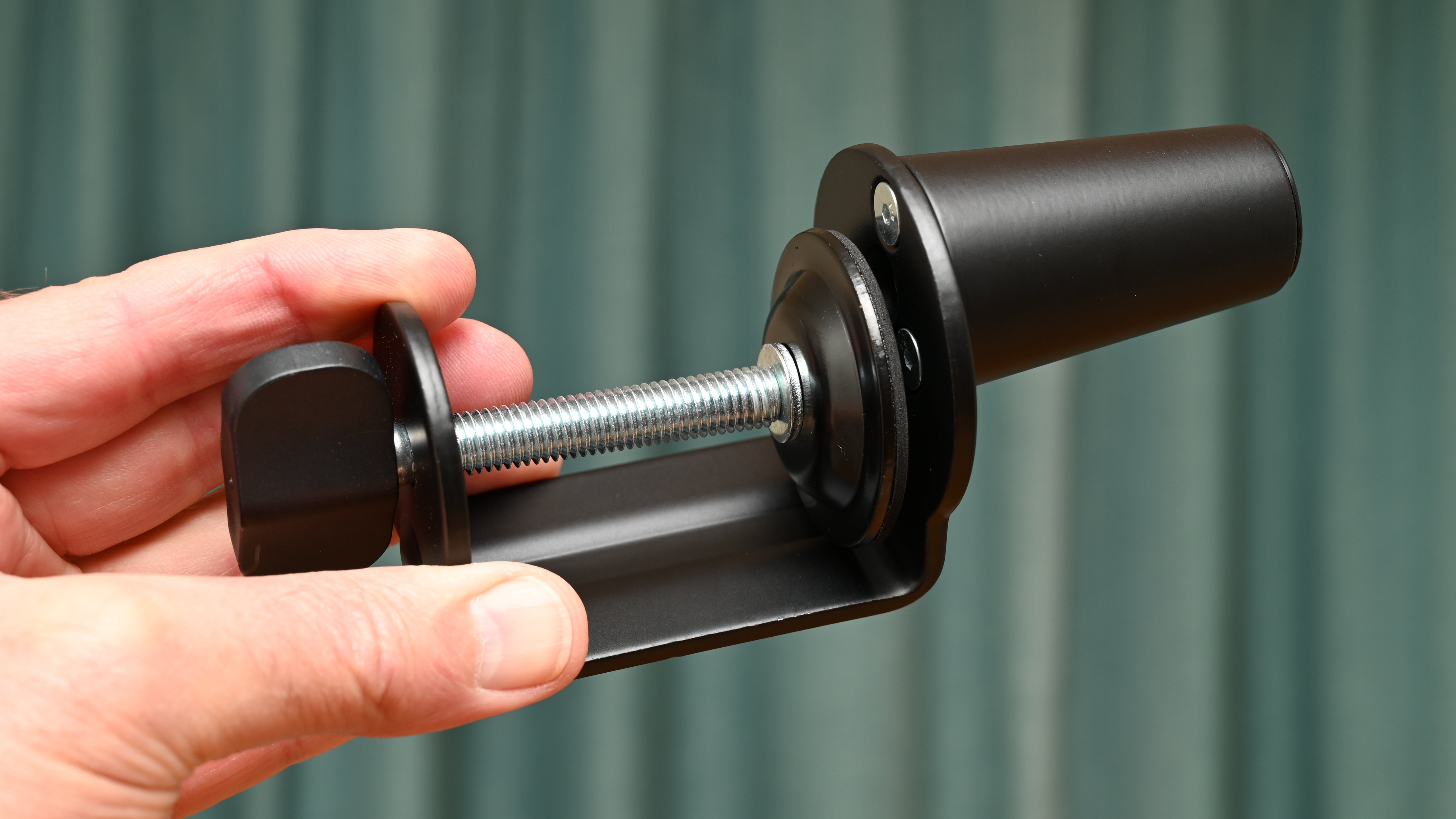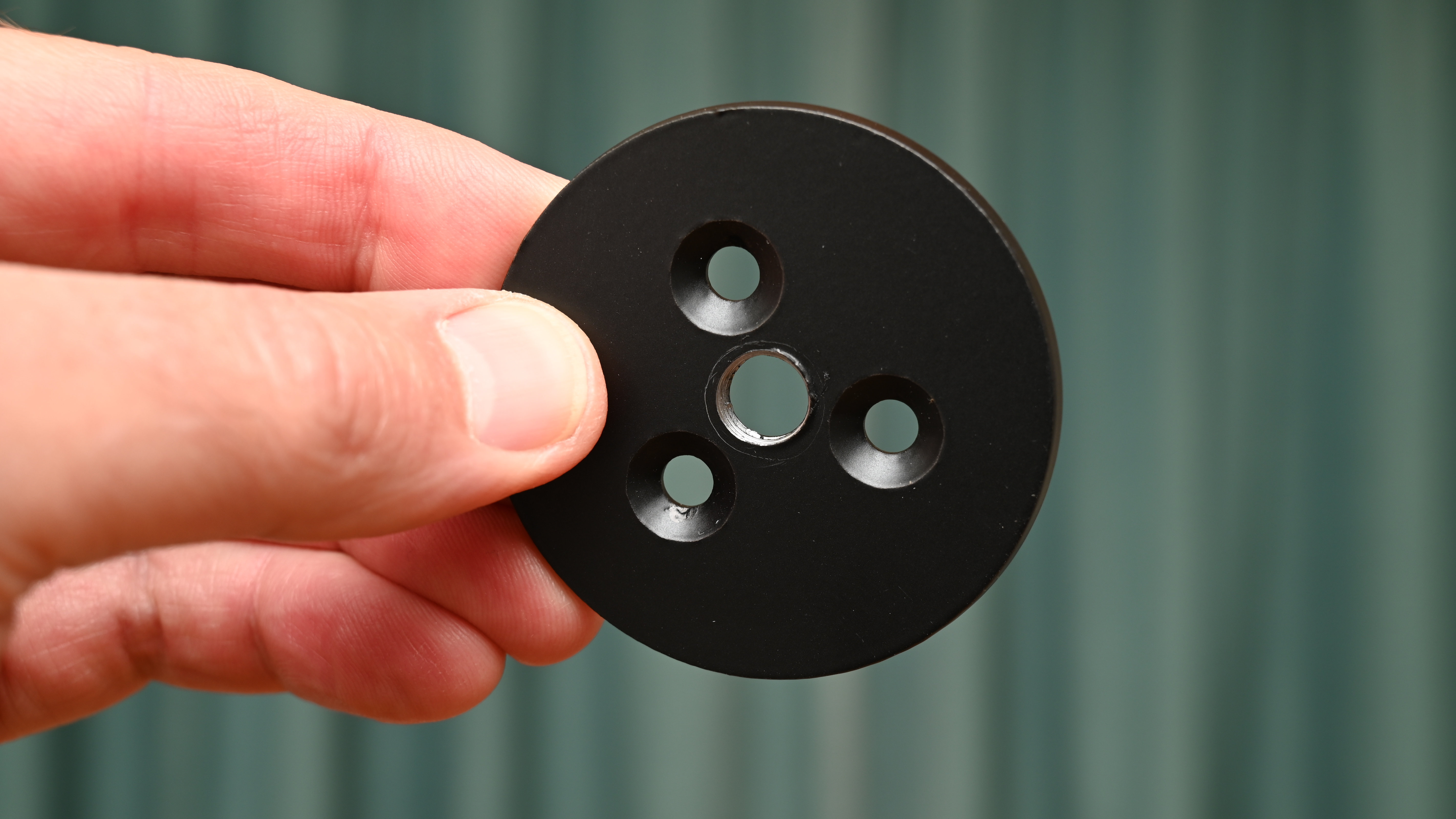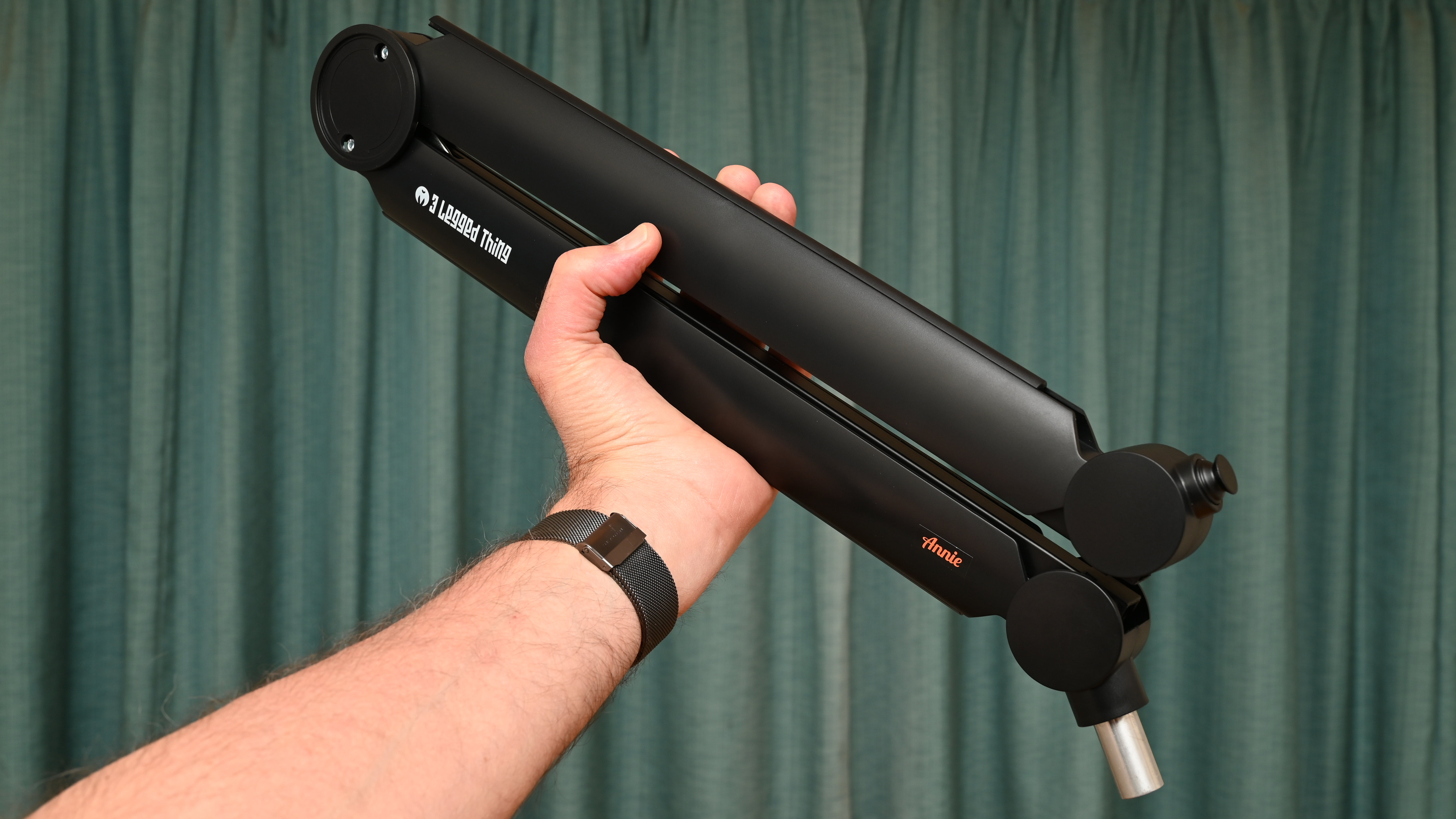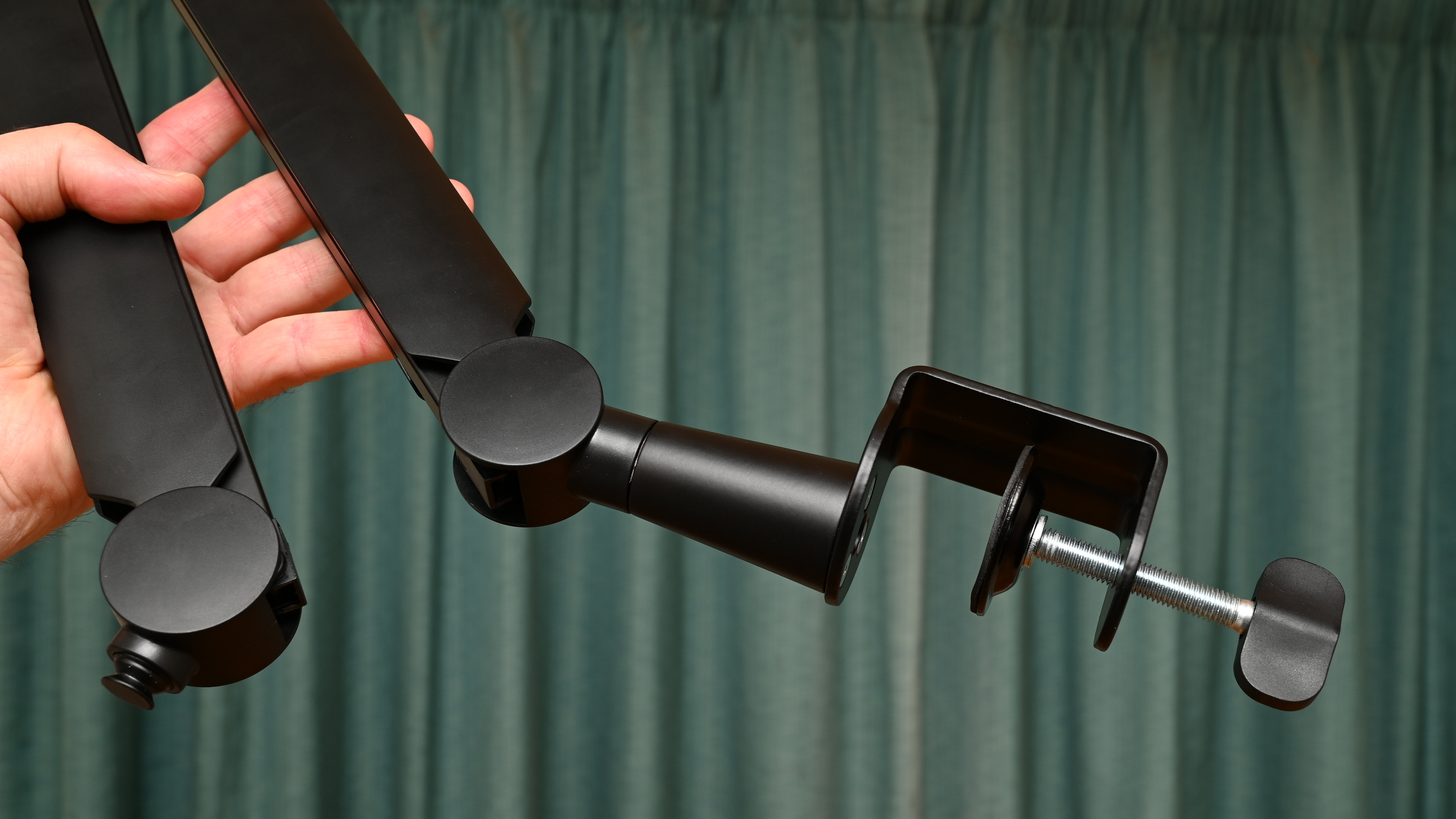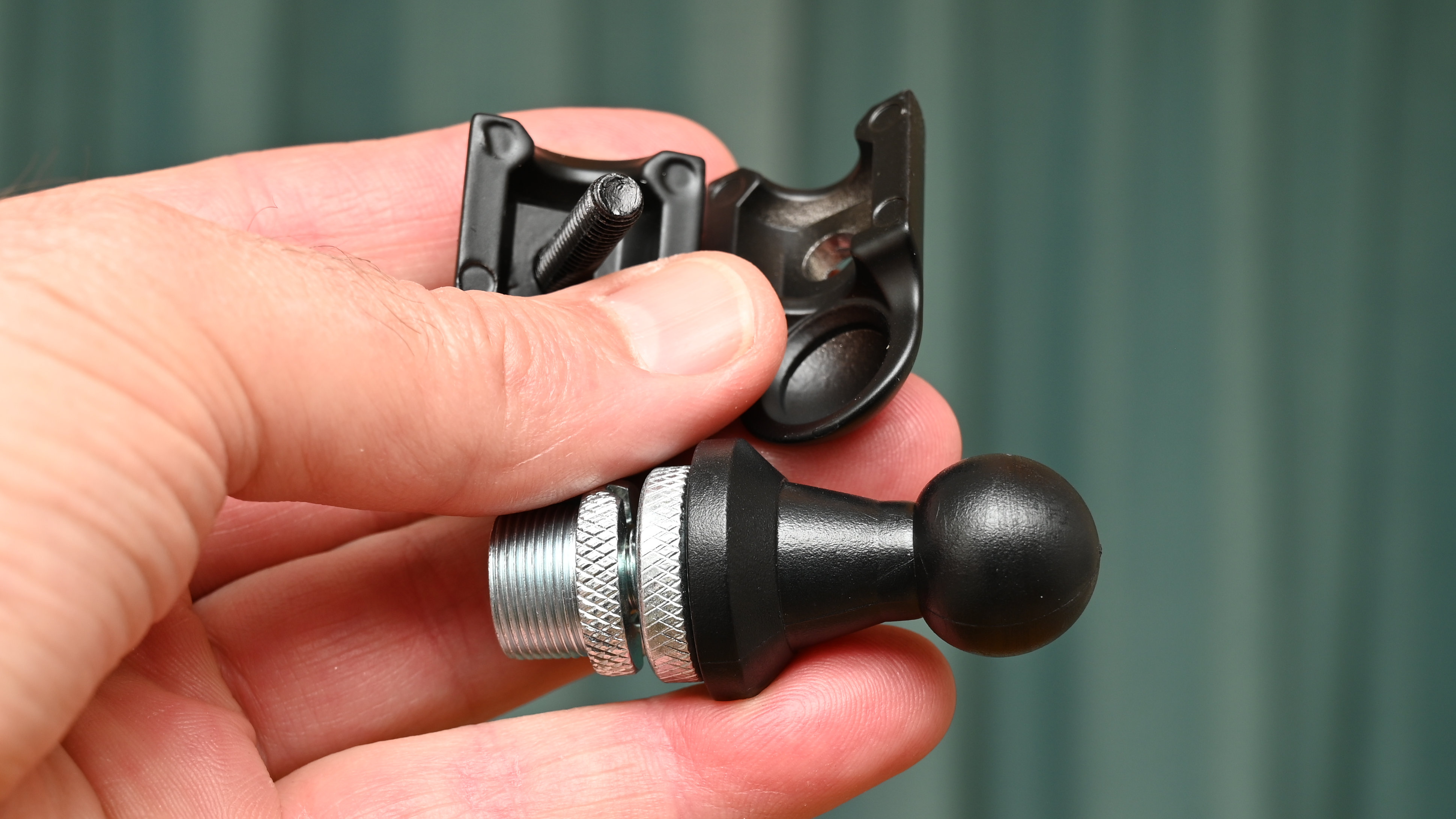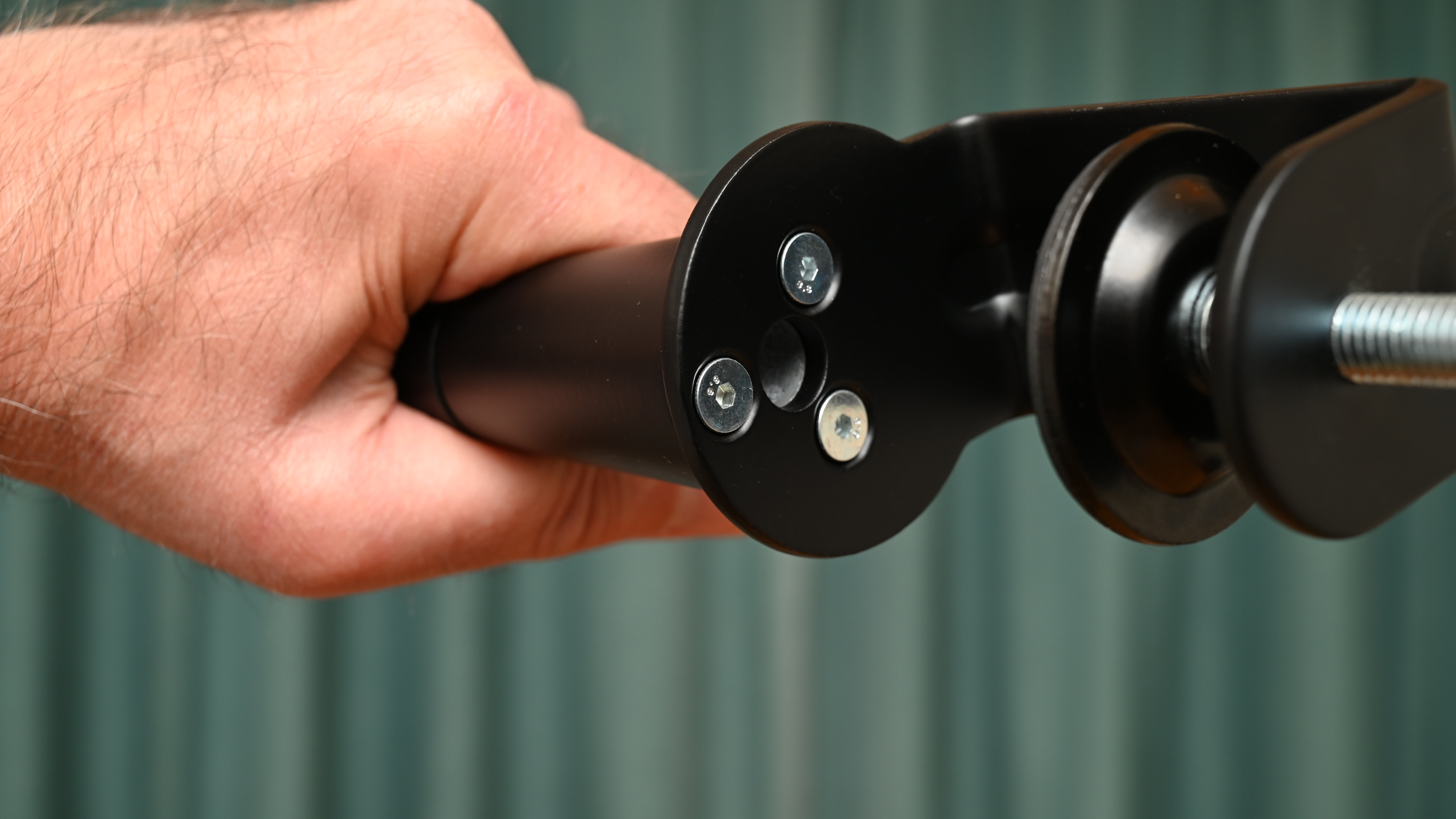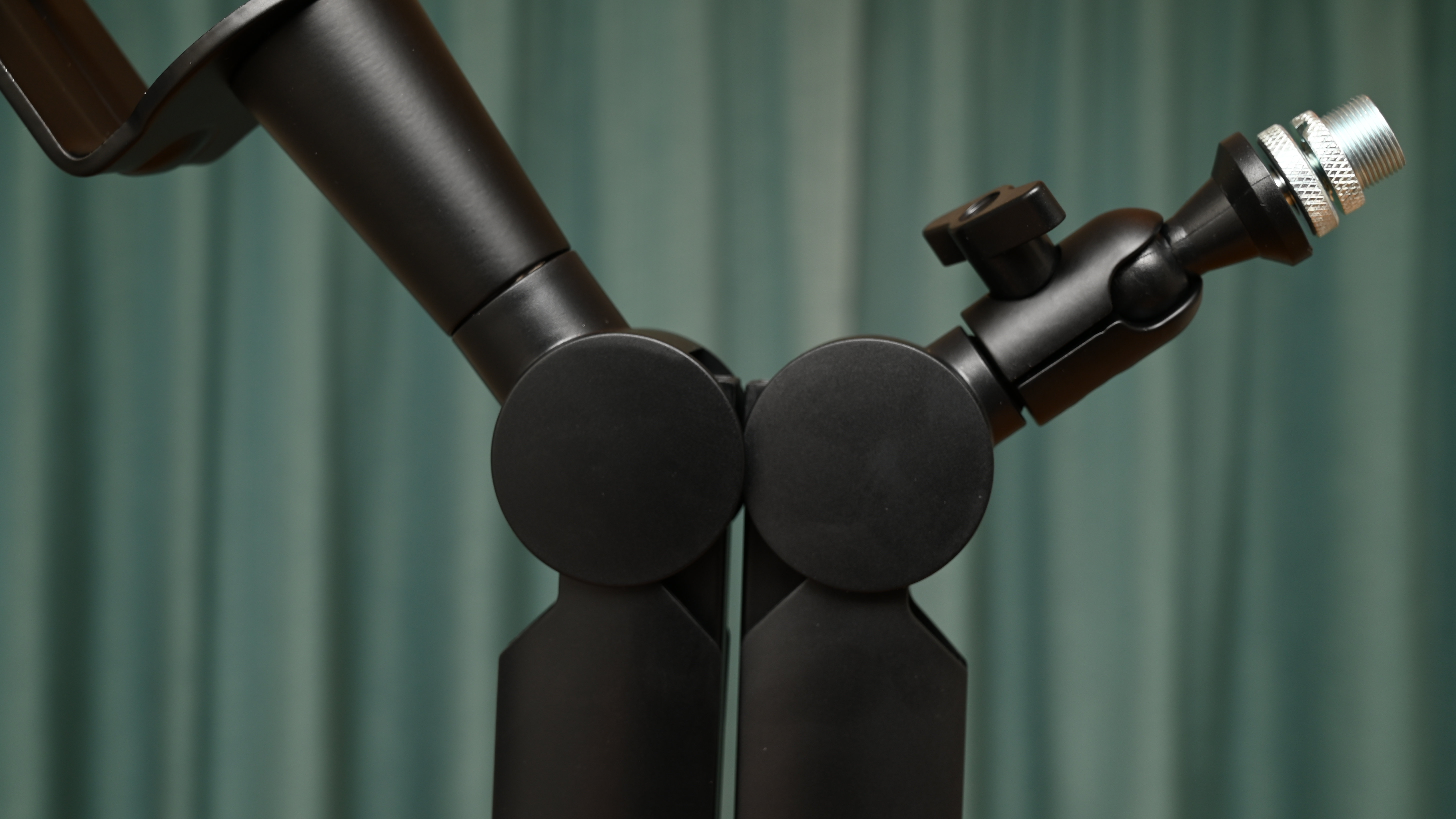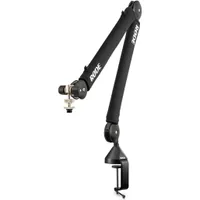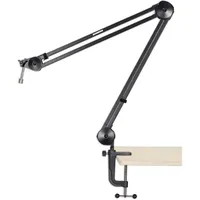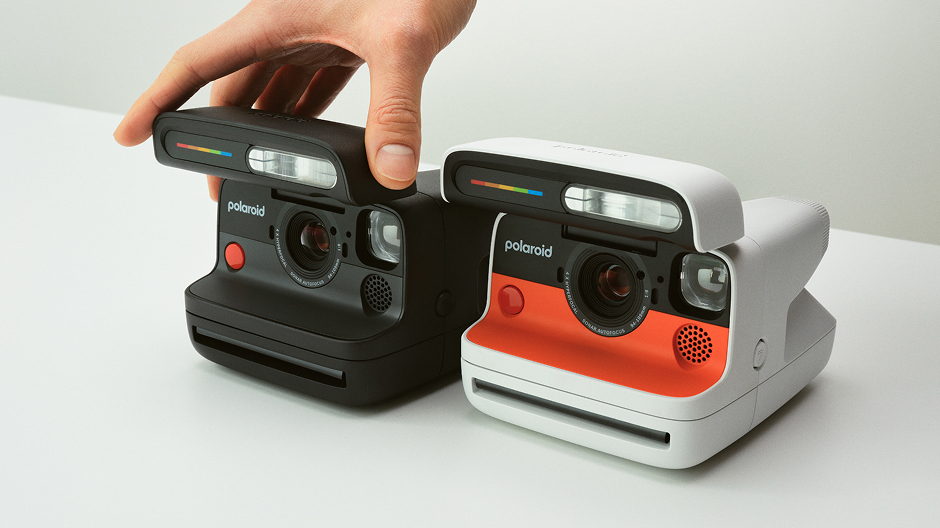Digital Camera World Verdict
The 3 Legged Thing Annie has a simple task to perform, but it performs it very well. It’s a studio arm that mounts to a desk or table, and enables you to quickly and easily place a microphone at your ideal position, then hold it there without budging while you say your piece. It’s well made, works a treat and is good value for money.
Pros
- +
Good reach and range
- +
Smooth, gliding movement
- +
Dual mount options
Cons
- -
Not the heftiest load rating
- -
Cheaper options available
Why you can trust Digital Camera World
I spent a lot of time on both sides of studio microphones in my early working life. First I was a studio broadcast engineer for the BBC in London, then moved to Swaziland (now Eswatini) for a couple of years where I continued broadcast engineering while also reading radio news bulletins, my English accent landing me the additional job. The 3 Legged Thing Annie takes me back a few years – actually a few decades, to a time when radio news bulletins were written out on paper using an antiquated machine called a typewriter.
I’m pleased that not much has changed and that Annie works on the same principles. It’s as highly effective as the studio microphone arms of yesteryear. Considering 3 Legged Thing’s habit of naming its products after legends of music, you might wonder if this studio arm is named after Annie Lennox of Eurythmics and solo fame, or maybe even after the hit musical, Annie Get Your Shotgun Mic.
In fact, it takes its name from the legendary Annie Nightingale, whose groundbreaking roles included being the first female DJ and presenter both on BBC Radio 1 and BBC Television’s The Old Grey Whistle Test. Her namesake sets out to do her proud, as one of the best microphone boom arms on the market.
3 Legged Thing Annie: Specifications
Reach | 84.7cm / 33.3in |
Weight | 1.5kg / 3.3lb |
Maximum load | 1kg / 2.2lb |
3 Legged Thing Annie: Price
What price a decent microphone boom arm? Typically, you can expect to pay from as little as $20 / £15 up to about $150 / £100, which puts Annie in the mid pack, selling for $70 / £60. At the time of writing this review, I was unable to find any Australian outlets selling the boom arm. The same goes for 3 Legged Thing’s other two microphone boom arms that were launched at the same time, namely the Steve (after Steve Wright) at a slightly pricier $80 / £70 and the budget-friendly John (after John Peel) at $45 / £40. The trinity neatly covers off three of Britain’s most iconic and dearly loved radio DJs and presenters of all time.
3 Legged Thing Annie: Design & Handling
Enough of all these studio microphone arms, let’s talk about something else. All the way back in 1932, an automotive engineer by the name of George Carwardine was busy in his garden shed, inventing a new type of spring-loaded suspension mechanism. It could be moved around and positioned at any angle with speed and ease, after which it would hold its place as if by anti-gravity magic. A suitably lightbulb moment followed and the Anglepoise lamp was born.
I only mention it because every studio microphone arm that I’ve ever used works on the same principle. A clever arrangement of springs enables quick and easy movement without the need to release any clamps, or tighten them up again once the mic is in place. It’s simple, intuitive and highly effective. But unlike my old Anglepoise lamps, the spring-loaded mechanisms in the Annie remain completely silent during movement, which is naturally an important consideration when microphones are close at hand.
Unlike most 3 Legged Thing tripods and other supports, this one comes as a kit of parts. Indeed, you’ll usually find a download link for retrieving your 3 Legged Thing user guide online but Annie comes with a good old-fashioned sheet of folded paper. It has what you might call the IKEA effect, in that you’ll love something more if you put it together yourself. In time-honored tradition, the unfolded double-sided sheet of paper contains diagrams and instructions for six steps to reach fully assembled studio arm heaven. Let’s follow the process, as it also neatly guides us through all the salient features.
The best camera deals, reviews, product advice, and unmissable photography news, direct to your inbox!
The first step in construction gives you two choices. You can either go for clamp mounting, in which case you’ll use a C-shaped clamp that fits to the back or side of a desk or table, or you can choose grommet mounting. For the latter, you’ll need to drill 10mm / 3/8in hole through your desk or table, which might sound a bit drastic but is often preferable in the environment of a home studio or professional setup. I like that Annie comes with alternative fixings and that it’s easy to use either option.
Next is the fun part, which comes complete with a safety warning for a ‘stored energy hazard’. When you snip the cable tie that binds the arm in its fully folded position, it might spring out and take you by surprise, so the instructions suggest that one person cuts the tie while the other holds the arm and then releases it gradually. I reckon you can successfully accomplish the task with a single pair of hands and a modicum of care.
The bottom of the arm has a spigot that slots into a nylon bush in the base. It’s the same deal whether the base is mounted to the table by clamp or grommet. To fit the arm, you just need to loosen an Allen screw in the base, plug in the arm, then tighten up the screw again. The net result is that the spigot and bush enable a full 360 degrees of lateral rotation with silent smoothness.
Moving to the other end of the arm, the next job is to fix the microphone mount ball & socket assembly. Again, it’s a simple task, this time involving taking a screw out, wrapping the sides of the socket around the top of the arm, then screwing it back together with the ball section inside. The mount comes with a standard 3/8in threaded shaft plus a 5/8in adapter, to suit the widest range of microphone holders.
Once all that’s done, which only takes a few minutes, you’re pretty much ready to roll. To keep things neat and tidy, however, there’s a final step of sliding out a pair of covers that run the length of both arm sections. These reveal a channel through which you can run the microphone cable, so you can keep it out of sight and out of harm’s way after refitting the covers. There are a couple of load-bearing adjustment screws beneath a magnetic flap but it’s unlikely you’ll need to tinker with these.
3 Legged Thing Annie: Performance
I’m completely satisfied with the performance of the 3 Legged Thing Annie. As I’d hope for, the range of movement is wide-ranging and silky-smooth. It requires barely more than zero time and effort to swing the arm around and to lift it up and down, finding your sweet spot with speed and ease. Even more importantly, there’s no gradual sagging of the microphone after you’ve left it where you want it.
The spring-loaded mechanism works flawlessly and in a similar manner, the ball and socket joint that holds the microphone clamp is equally effective. A simple twist of the lock/release lever is all that’s needed to adjust the angle of the microphone, either laterally or up and down, so you can position it just how you want it. Some prefer to have the microphone angled downwards from above, others like it pointing upwards from below or straight on, and if you’re reading from a script you might like it angled in to face your face from one side or the other. The Annie caters to every need and whim.
3 Legged Thing Annie: Verdict
I’m yet to be anything other than very impressed with 3 Legged Thing tripods and other supports. The Annie continues a winning theme as far as I’m concerned. It’s cleverly designed and well made, fulfilling its purpose in fine style. Movement is smooth and free-flowing, making it quick and easy to get a microphone into perfect position, and once that’s done it stays put with no unwanted drooping, sagging or other drama. It’s a really good studio mic arm, as well as being very good value for money at the price.
Features ★★★★☆ | The feature set isn’t overly exotic but it has everything I’d expect in a studio microphone arm. |
Design ★★★★☆ | Smart design is backed up by good build quality, making Annie a mic support that you can count on. |
Performance ★★★★☆ | Quick and easy adjustment in all directions is coupled with firm and solid support when the mic is in place. |
Value ★★★★☆ | It’s not cheap for a studio microphone arm but it’s not expensive either, being good value at the price. |
Alternatives
Matthew Richards is a photographer and journalist who has spent years using and reviewing all manner of photo gear. He is Digital Camera World's principal lens reviewer – and has tested more primes and zooms than most people have had hot dinners!
His expertise with equipment doesn’t end there, though. He is also an encyclopedia when it comes to all manner of cameras, camera holsters and bags, flashguns, tripods and heads, printers, papers and inks, and just about anything imaging-related.
In an earlier life he was a broadcast engineer at the BBC, as well as a former editor of PC Guide.
You must confirm your public display name before commenting
Please logout and then login again, you will then be prompted to enter your display name.
